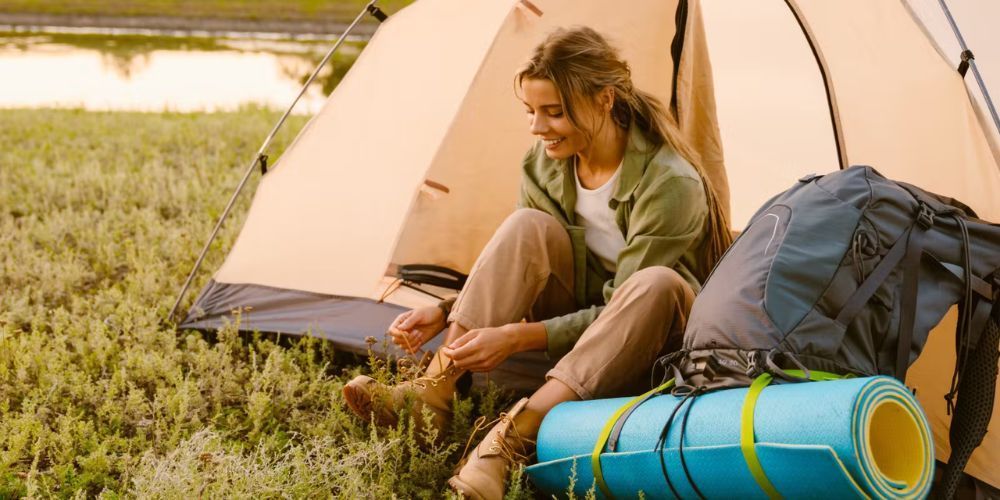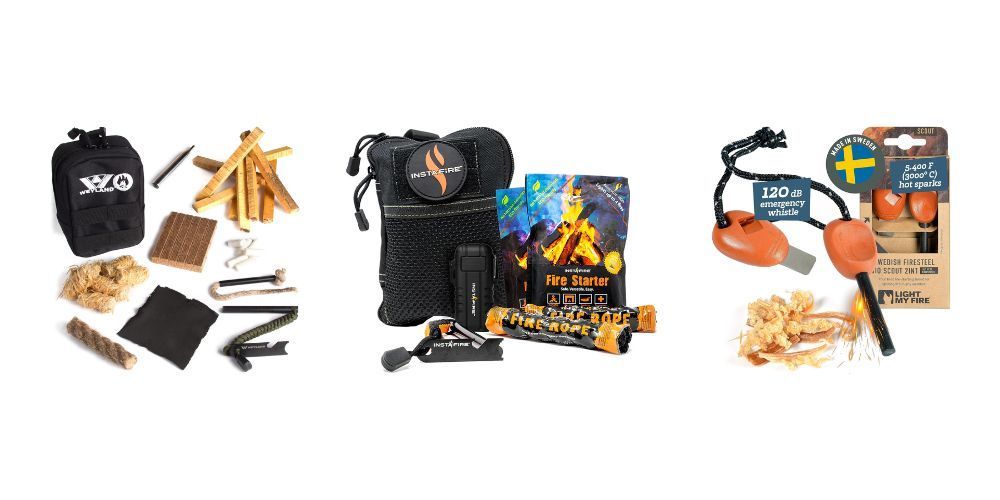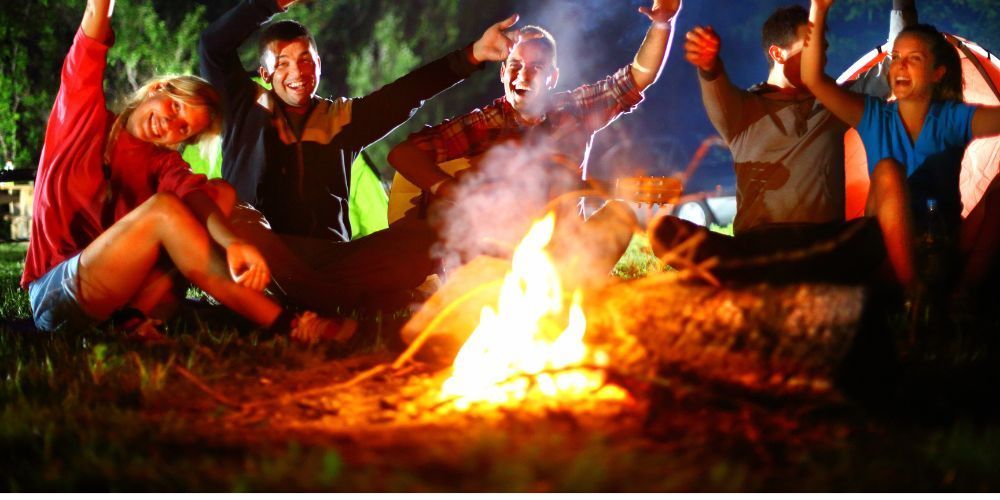Denali National Park: A Complete Visitor Guide for Hiking and Wildlife
October 16, 2024
Denali National Park, stretching over six million acres, stands as one of Alaska's most vast and captivating wilderness areas. Picture yourself traversing a land where taiga forests give way to alpine tundra, and snowy peaks loom above. This isn’t just any park—it's home to North America's tallest peak, Denali, which rises 20,310 feet into the sky. The sheer variety of landscapes attracts over 600,000 visitors annually who come seeking both pristine beauty and diverse wildlife.
Exploring this majestic expanse goes beyond merely reaching the summit. You'll find thrilling encounters with grizzly bears along rivers or spotting caribou in alpine regions. To make the most of your visit, we've poured countless hours into creating this comprehensive guide filled with insider tips for hiking trails, expert recommendations for wildlife viewing spots, and an easy-to-follow itinerary to ensure you don’t miss out on key experiences. Here’s what you need to know to start planning your unforgettable adventure in Denali’s awe-inspiring wilderness.
Denali National Park is a stunning wilderness area that spans over six million acres and is home to diverse ecosystems, wildlife habitats, and North America's highest peak, Denali, standing at 20,310 feet. Visitors can enjoy a variety of landscapes including taiga forests and alpine tundra while encountering un-fenced wildlife in their natural environment.
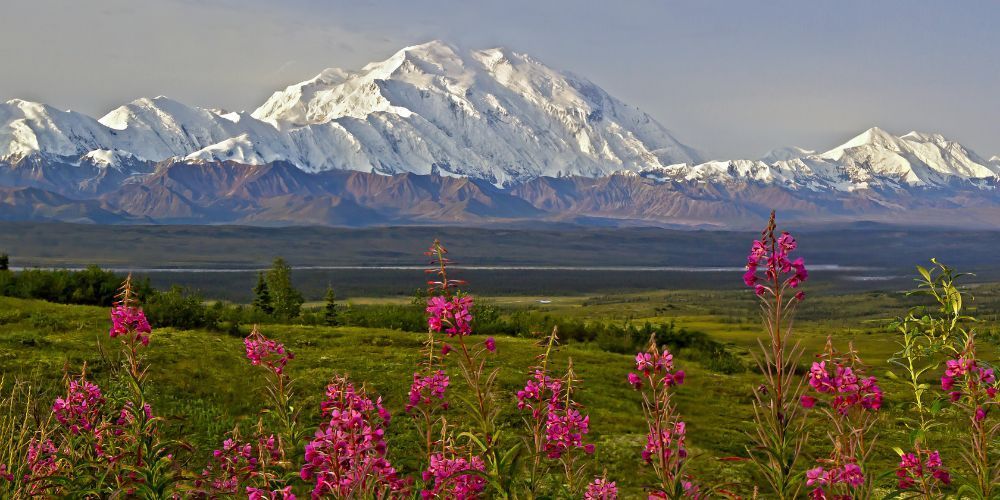
The Majestic Denali National Park
Denali National Park is a breathtaking tapestry woven from nature's finest threads, stretching across more than six million acres. This expansive wilderness is a mecca for those who revel in the great outdoors, showcasing a mesmerizing blend of environments. The park encompasses everything from lush taiga forests to stark alpine tundra, and towering snow-capped mountains that seem to pierce the heavens. Central to all of this beauty stands Denali, North America's tallest peak at a staggering 20,310 feet, casting its commanding shadow across the landscape. Each aspect of this massive natural canvas plays a vital role in supporting a rich tableau of wildlife while presenting unique challenges for hikers navigating its trails.
With such diverse geographical features, it’s intriguing to see how they contribute to the aesthetic value of the park and enhance visitor experiences.
Spectacular Landscapes
Within these sprawling horizons, you'll encounter varied ecosystems that host a wealth of flora and fauna. The contrast between different altitudes and terrains creates distinct habitats; dense vegetation flourishes in the valleys, while exposed rock and permafrost crown the higher elevations, offering a glimpse into an ecosystem that has thrived against the odds. Wildlife watchers can expect to encounter moose grazing near serene ponds and grizzly bears rummaging through berry patches as they prepare for winter hibernation.
Keeping in mind that weather conditions can change rapidly within the park makes preparation key—not only does this affect visibility while hiking, but it may also influence wildlife behavior.
Annually, over 600,000 visitors venture into Denali’s embrace, drawn by its pristine landscapes and opportunities for wildlife observation. This influx can lead to crowded areas along popular trails, so early planning and arriving at less-traveled spots can enhance your experience tremendously.
However, the stunning scenery isn’t solely defined by its picturesque landscapes; some lesser-known geographical marvels also deserve exploration.
Geographical Marvels
Stunning geographical formations punctuate Denali National Park’s terrain—raging rivers carve valleys with relentless force while glacial systems blanket vast areas in ice. Take Polychrome Pass, for example; famed for its vivid cliffs that reveal layers of volcanic ash in striking colors ranging from vibrant reds to lush greens. The visual feast here is simply unforgettable, providing ample opportunity for photography enthusiasts eager to capture the dynamic hues against Alaska's backdrop.
In addition, Muldrow Glacier stretches approximately 39 miles, showcasing nature's grandeur and resilience through its magnificent icy expanse. Visitors are often left awestruck upon witnessing the slow-moving mass that embodies both power and grace—an eloquent reminder of Earth’s ability to shape itself over millennia.
As you traverse through each extraordinary feature of this majestic park, consider how the captivating landscapes pave the way for encounters with wildlife that enriches your experience even further.
Exploring the Park's Wildlife
Denali National Park is home to an intriguing array of wildlife that captivates visitors from around the world. The park's diverse ecosystems nurture everything from delicate birds flitting through the trees to powerful predators roaming the land. It’s a vibrant spectacle of life that makes every trek into the wilderness feel like an expedition into a living gallery.
Meet the Big Five
As you venture into this wild expanse, keep your eyes peeled for the famed "Big Five" animals that draw people in by the hundreds of thousands each year. These majestic creatures are not just photogenic—they embody the spirit of Denali and contribute significantly to its allure.
Among them, you'll find:
- Grizzly Bears: Often spotted along rivers, these magnificent mammals can weigh up to 800 pounds and are primarily active from spring to fall. Watching a grizzly catch salmon is an unforgettable experience.
- Wolves: Seen especially in the Toklat River area, these social animals live in packs and can often be heard howling during dawn and dusk when they are most active.
- Caribou: Frequently found in alpine regions, particularly during their migratory seasons, caribou are known for their impressive antlers and unique adaptations to cold climates.
- Dall Sheep: Dall Sheep inhabit high, rocky cliffs where they can often be seen navigating seemingly impossible terrain with grace. Spotting these agile climbers can be a thrilling part of any hike.
- Moose: Roaming the forested areas, moose are the largest members of the deer family. Their distinct long legs and massive antlers make them easily recognizable yet challenging to catch a glimpse of near thicker brush.
Spotting these majestic creatures is a primary reason many visit Denali, but understanding their behavior enhances your experience. For instance, knowing that grizzly bears are mostly active during early mornings or late afternoons can increase your chances of witnessing them firsthand.
Beyond the Big Five, Denali supports over 39 species of mammals and hundreds of bird species, making each hike an opportunity for discovery beyond initial expectations. Whether you're peering through binoculars in search of a soaring eagle or scanning for subtle movements in the underbrush, every moment spent observing wildlife fosters a deeper connection to this stunning landscape. As you prepare for your adventure, consider what trails may lead you closer to these remarkable animal encounters.
Popular Hiking Trails
With numerous trails designed for varying skill levels, Denali is truly a hiker's paradise. The park embraces off-trail hiking—an exciting endeavor commonly referred to as "free roaming." This approach allows visitors to chart their own courses through the captivating wilderness but does necessitate some navigation skills. Trail maps and understanding the terrain are crucial for safely enjoying this self-directed exploration.
Beginner-Friendly Trails
If you're stepping onto the trail for the first time, the Horseshoe Lake Trail is an ideal starting point. Spanning just 1.5 miles round trip, this trail takes you around the picturesque lake, offering breathtaking views and potential wildlife sightings. Imagine wandering along as beavers busily construct their homes or standing still as a majestic moose gracefully ambles into view. Beginners can enjoy a gentle walk here while connecting with nature without overwhelming physical demands.
When heading out on beginner trails, always remember to carry water, wear appropriate footwear, and check weather conditions before setting off.
Moderate Trails
For those who feel confident in their hiking abilities and want a bit more challenge, the Savage River Loop presents an excellent option. This moderate trail stretches roughly 4 miles round trip and runs parallel to the gentle currents of the Savage River. Hikers will find the scenery continually shifting—from lush greenery to impressive rocky outcrops that border the stream. You may encounter fewer crowds here, allowing for a more intimate experience with nature as you enjoy panoramic vistas or simply revel in the soothing sounds of flowing water.
Along this trail, keep your eyes peeled for wildlife! Whether it’s Dall sheep perched high on rocky ledges or caribou gracefully moving through the surrounding vegetation, there's always something fascinating to observe. Just as crucial as selecting suitable trails is being aware of your surroundings; bear spray is recommended due to the area's wildlife.
While these trails offer splendid experiences suitable for different skill levels, there are also more adventurous routes waiting for those eager to explore further into the thrill of nature's embrace.
Biking and Camping Adventures
Biking the Park Road
The Denali Park Road, which stretches a scenic 92 miles, offers an unparalleled biking experience. With a limited number of vehicles allowed during certain times, cyclists can revel in the untouched beauty of the park in peace. Riding along the road means observing majestic landscapes, from sprawling tundra to lofty peaks, all while enjoying the fresh mountain air.
Many adventurers take advantage of this opportunity from late spring into early fall when the weather is most suitable for cycling. Keep in mind that conditions can change rapidly; therefore, checking the weather before heading out is wise.
One of my favorite memories biking here involved spotting a family of moose grazing by a quiet stream. Those moments remind you just how lucky we are to share space with such magnificent wildlife.
Camping Choices
When it comes to camping, Denali provides a wide array of choices tailored to different preferences and experiences. For example, visitors will find campgrounds like Riley Creek, conveniently located close to the park entrance, offering a bustling atmosphere where interpersonal interactions flourish among fellow campers. On the other hand, Wonder Lake Campground presents serene surroundings closer to the heart of Denali's natural splendor.
Each campsite has its own charm, yet they share essential amenities—think picnic tables and fire pits—which enhance your outdoor experience. However, securing a reservation well in advance is vital, especially during peak season when spots fill up quickly.
If you're up for something more rugged, backcountry camping is available throughout the park with a permit. This option grants you more freedom and privacy as you carve out your unique spot among nature. Just be sure to follow Leave No Trace principles to preserve those beautiful settings for future generations.
As someone who enjoyed spontaneous nights under starry skies, I can't emphasize enough how freeing it feels to wake up surrounded by nature’s beauty.
Engaging in these adventurous activities not only enhances your experience but also deepens your understanding of Denali's remarkable ecosystems as you prepare for what each season brings to this stunning landscape.
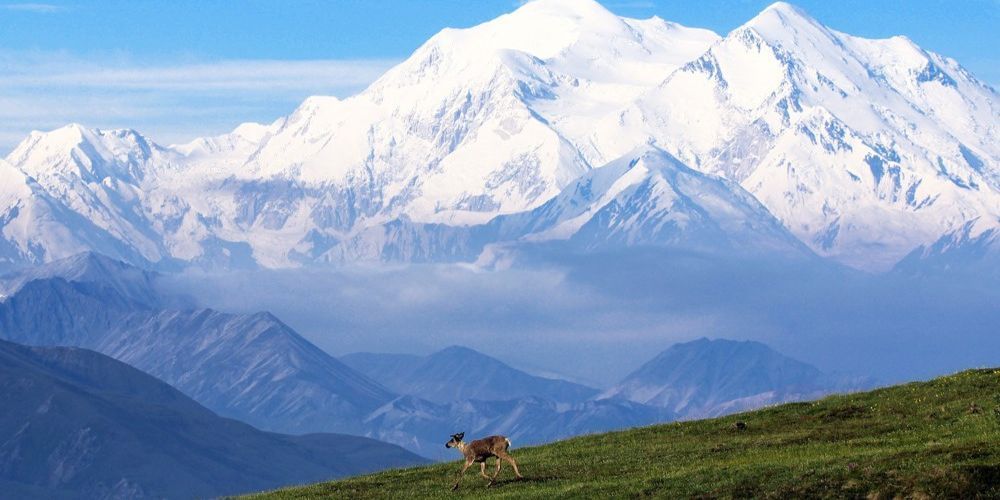
Seasonal Highlights and Weather
When planning your adventure, keep in mind that Denali National Park is a living canvas that transitions dramatically through the seasons. Each season paints a unique picture for visitors, featuring distinct weather patterns and spectacular sights. The table below illustrates these points beautifully, showcasing typical temperature ranges, weather conditions, and tantalizing highlights of each time of year:
| Season | Weather | Highlights |
|---|---|---|
| Spring | 30-50°F, melting snow | Blooming flora, emerging wildlife |
| Summer | 50-70°F, long sunny days | Optimal hiking, peak wildlife activity |
| Fall | 20-50°F, early snow | Fall foliage, fewer crowds |
| Winter | -40 to 20°F, heavy snowfall | Northern Lights, cross-country skiing |
Starting with spring, the air begins to warm as snow melts away—ushering in vibrant blooms and awakening wildlife. You can witness the first flowers timidly popping up from beneath the thawing crust of ice. Keep an eye out for bears emerging from hibernation and various birds returning to serenade the landscape. Temperatures generally range from 30 to 50 degrees Fahrenheit, so dressing in layers is a smart strategy as cool mornings can give way to warmer afternoons.
As spring seamlessly gives way to summer, temperatures rise significantly. This season offers long sunny days perfect for exploring the vast terrain of the park. With daytime highs reaching between 50 to 70 degrees Fahrenheit, summer is arguably the best time for hiking and wildlife viewing. It's when you have the greatest chance of seeing bears foraging for berries or caribou wandering through lush fields. However, be mindful; summer also brings mosquitoes that can put a damper on your outdoor experience. Don't forget your insect repellent!
Once summer starts to fade, we transition into fall, where a cooler breeze sweeps across the landscape.
During fall, temperatures drop again, fluctuating between 20 to 50 degrees Fahrenheit. This period is marked by stunning fall colors as leaves turn golden and crimson—a perfect backdrop for photographs. You’ll find trails less crowded as many tourists retreat home before winter sets in. It’s also a great time for spotting moose as they prepare for mating season. Be sure to pack a warm jacket while soaking in those picturesque views.
Winter Adventures
Finally arrives winter, transforming Denali into a serene wonderland characterized by heavy snowfall and frigid temperatures ranging from -40 to 20 degrees Fahrenheit. The park can feel desolate yet captivating at this time—the quiet is profound under blankets of snow. Visitors can engage in activities like cross-country skiing or marvel at the stunning northern lights dancing overhead on clear nights. Although not all park roads are open during winter months, certain areas remain accessible for adventurers willing to brave the cold.
Understanding these seasonal shifts allows you to prepare accordingly and tailor your visit based on what you want to see and experience in Denali National Park. Always remember that prepared visitors traveling throughout different seasons enrich their journey with unforgettable moments amidst nature’s beauty.
As you gear up for your exploration of this majestic landscape, it's essential to know what services and resources are available to enhance your visit.
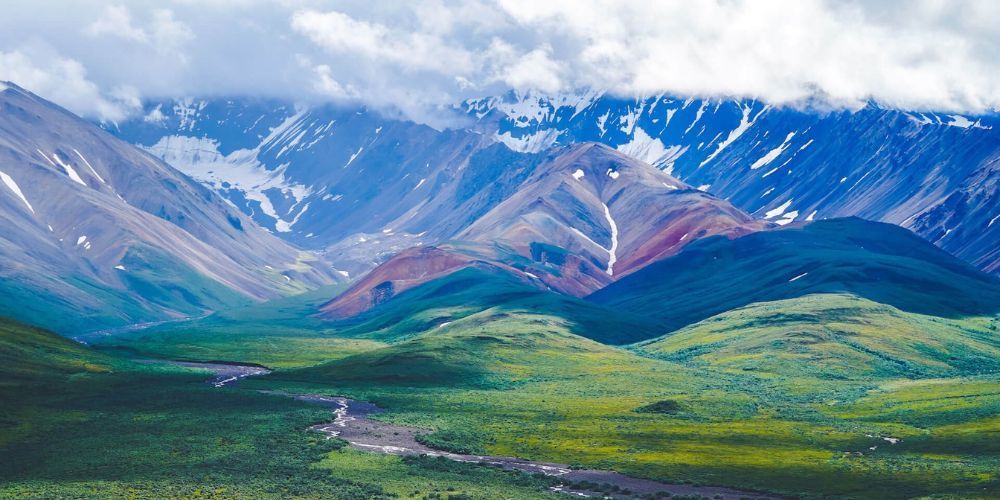
Essential Services for Visitors
Denali's remote location may feel isolated, but it is well-equipped with an array of essential services that cater to both casual tourists and serious adventurers alike. The Denali Visitor Center is your first stop upon arriving, serving not just as a welcoming hub but as a treasure trove of information on park events and wildlife encounters. Its educational exhibits offer insights into the local ecosystem, while friendly park rangers are always available to assist with inquiries, share knowledge about campgrounds, provide updates on trail conditions, and help arrange guided tours.
Visitor Centers and Rangers
At the Denali Visitor Center, you can find a wealth of resources that enhance your visit. Not only can you explore hands-on exhibits detailing Denali's wildlife and geology, but it also serves as a booking point for ranger-led activities. These tours provide unique perspectives on the park’s rich history and diverse habitats. As one ranger once told me during a visit, “Having someone knowledgeable by your side can transform an ordinary hike into an extraordinary journey.” Therefore, I recommend grabbing a schedule of ranger-led activities before heading out.
A visit here also equips you with maps and safety information essential for navigating the park trails. Alongside detailed guidance on popular routes, the rangers help visitors understand how to respect and protect the natural habitat they are exploring.
Dining and Lodging
When it comes to dining, Denali offers options that reflect its unique wilderness setting. The visitor center includes modest snack bars for those who want to grab a quick bite before hitting the trails. For more substantial meals, nearby lodges provide various restaurants where you can savor local cuisine—with some incredible views to accompany your meal. On my last trip, I enjoyed a delightful salmon dish at one of these lodges after a long day of hiking; it felt like the perfect reward for all my efforts.
If you're planning to stay overnight, accommodations vary widely within the park; from rustic backcountry campsites ideal for stargazing and immersing yourself in nature, to luxury lodges offering comforts after a thrilling day outdoors. Each option comes with its own set of experiences: camping allows you to fully embrace the vastness of Alaska’s wilderness while lodges provide warmth and hospitality that helps revive your energy for another day of exploration.
With all these services in place to enhance your experience, it's crucial to prioritize your well-being while exploring this remarkable wilderness. Understanding potential risks and preparing accordingly will ensure you make the most of your adventure.
Safety Tips and Precautions
Safety is paramount in any outdoor adventure, particularly in Denali's wild environment. This vast wilderness is home to various wildlife and unpredictable weather conditions, making it crucial for visitors to stay vigilant and prepared.
Wildlife Safety
One of the most critical aspects of visiting Denali is understanding how to navigate interactions with wildlife. The sheer beauty of the park often tempts hikers to get closer for that perfect photo opportunity. However, it's essential to keep a safe distance from all wildlife. This means enjoying their magnificence from afar, as approaching them can lead to unexpected and dangerous encounters. The general guideline is to maintain at least a 100 yards distance from bears and a similar rule for moose, which can be equally unpredictable.
Another vital aspect of wildlife safety involves food storage. Bears are especially attracted to food smells, and improper storage can draw them closer than you'd like. Utilizing bear-proof food containers while camping or hiking is a non-negotiable practice in this park. These containers deter curious bears from investigating your stash, safeguarding both you and the animal’s natural behaviors.
"When faced with a potential bear encounter, preparation becomes your best friend. Always carry bear spray and understand its proper usage."
Carrying bear spray is highly recommended for any outdoor enthusiast trekking through Denali. This deterrent has been proven effective in close encounters with bears; understanding how to deploy it quickly and correctly can be a life-saver. A hiker's close encounter with a grizzly bear highlighted this necessity: the bear spray was able to deter an aggressive bear, allowing the hiker to retreat safely without causing harm to either party.
Weather Preparedness
Transitioning from wildlife considerations, weather preparedness is another significant area of focus when adventuring in Denali's unpredictable climate. Visitors should come equipped with thermal wear and waterproof clothing since temperatures can plummet rapidly or rain can strike seemingly out of nowhere. I remember hiking one summer day, expecting pleasant warmth, only to be met with chilling winds and dense fog—gear saved my trip that day.
It’s wise to pack layers that include moisture-wicking base layers, insulating middle layers, and waterproof outer shells to ensure comfort regardless of changing weather patterns. Being prepared with the right clothing not only enhances enjoyment but also ensures health and safety.
Alongside clothing, navigation tools should never be overlooked—relying solely on electronic devices can lead to trouble when batteries drain or signals fade in remote areas. Having a detailed map and compass handy serves as your trusty backup plan.
By considering these insights—ranging from wildlife interactions to preparing for sudden weather changes—you enhance your overall experience while exploring this magnificent wilderness.
Preparing for Your Denali Trip
Proper preparation is crucial for a successful trip to Denali National Park. The first step begins long before you set foot in the sprawling wilderness; it starts with physical conditioning. It’s important not to underestimate the demanding nature of hiking here. Elevations range between 1,500 to over 20,000 feet, and trails can be challenging. Therefore, it's wise to start a fitness regime at least two months before your departure.
Focus on building cardiovascular strength—this could involve activities like jogging, cycling, or swimming. Moreover, don't overlook strength-building exercises such as lunges and squats, which will help you navigate those steep trails without burning out too quickly.
Once you're physically prepared, the next step is gathering your necessary gear.
Gear Checklist
Having the right equipment can mean the difference between enjoying your adventure and feeling bogged down by discomfort or unexpected weather changes. Here are essentials that should accompany you:
- Sturdy hiking boots: Your footwear is your foundation. Invest in high-quality boots that provide support and traction on rugged terrain.
- Weather-appropriate layers: Packing layers allows you to stay comfortable as temperatures fluctuate dramatically throughout the day. Aim for moisture-wicking base layers, insulating mid-layers, and waterproof outer layers.
- High-energy snacks: Fuel yourself during the hike with nutritious snacks such as trail mix or energy bars—quick bursts of energy will keep your spirits high.
- Portable water filter: Staying hydrated is non-negotiable! A portable water filter allows you to refill from natural sources along the trail safely.
- First aid kit: Accidents can happen, even in paradise, so make sure you have a compact first aid kit at hand.
To lighten your burden when traveling to Alaska, consider renting gear in Anchorage or Fairbanks instead of hauling bulky items across flights. Many outdoor shops offer well-maintained equipment tailored for the unique demands of Denali’s environment.
But preparing doesn't just stop with packing; understanding the lay of the land is equally vital.
Appropriate preparation ensures a rewarding experience in Denali National Park, blending physical readiness with essential gear, setting the stage for an unforgettable adventure amidst stunning landscapes and wildlife. Embrace the journey ahead!
What are the best hiking trails in Denali National Park?
Denali National Park offers a range of hiking trails suitable for all skill levels, from easy strolls to more challenging backcountry treks. Popular trails include the Horseshoe Lake Trail, an easy 2-mile loop perfect for spotting wildlife along the Nenana River, and the Savage River Loop Trail, a moderate 2-mile loop with beautiful views of the river and surrounding mountains. For more experienced hikers, the Mount Healy Overlook Trail provides a strenuous but rewarding 5.5-mile hike with panoramic views of the park. Many areas in Denali are trail-less, allowing for true backcountry exploration for those comfortable navigating off-trail.
What wildlife can I expect to see in Denali National Park?
Denali is known for its diverse wildlife, and visitors can often spot creatures in their natural habitat. The “Big Five” mammals frequently spotted in the park include grizzly bears, moose, caribou, Dall sheep, and wolves. Bird watchers will enjoy sightings of bald eagles, golden eagles, and various species of migratory birds. Although wildlife sightings are more common along the park’s main road, visitors exploring trails or taking a bus tour increase their chances of spotting animals. Remember to maintain a safe distance and follow park guidelines to ensure a safe experience for you and the wildlife.
What is the best time of year to visit Denali National Park?
The best time to visit Denali is during the summer months, from late May to early September, when temperatures are mild and most park services are available. This is also when the Denali Park Road is open, allowing access to the park’s interior and the best opportunities for wildlife viewing and hiking. For those interested in winter activities, such as cross-country skiing and snowshoeing, the park remains accessible year-round, although visitor services are limited, and temperatures can drop significantly. Each season offers a unique experience, so consider what activities and weather best match your interests when planning your trip.


